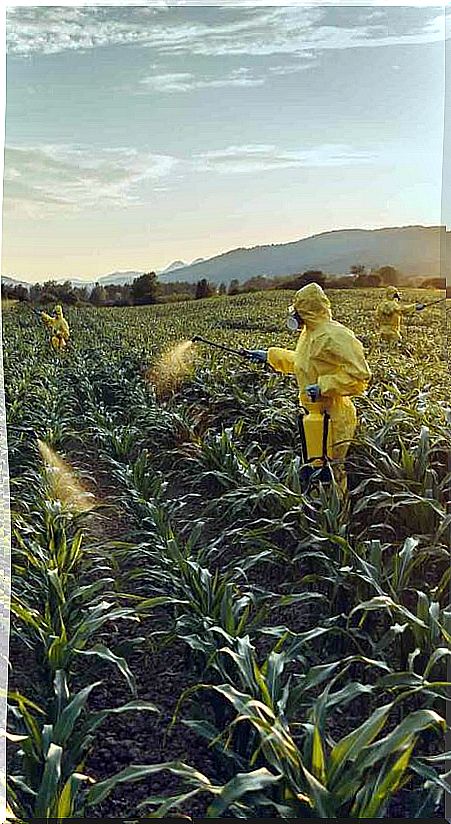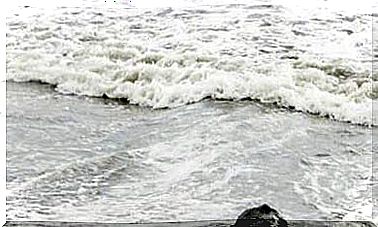Glyphosate: How It Affects Health And The Environment
Recent research suggests that glyphosate alters the microbiota of bees and makes them more susceptible to infection. A report by Ecologistas en Acción reveals that the controversial herbicide is very present in Spanish rivers, which gives an idea of its use and abuse.

The presence of the pesticide glyphosate exceeds more than 700 times the reference limit in some of the samples taken in Spanish rivers. This is what Koldo Hernández, coordinator of the group of chemists of Ecologists in Action (EeA) denounced.
The data shows the excessive use of this pesticide, which drags a controversy about its effects on health and the environment.
- Few information. “Until two years ago in our country the residues of this herbicide in food were not analyzed,” explains Hernández. EeA asked the Ministry for the Ecological Transition and the Demographic Challenge for the results of the water analyzes of the different river basin districts and was surprised (see box on the right).
- Spain, top consumer. The General Directorate of Health of Agricultural Production (Ministry of Agriculture, Fisheries and Food) offers, if requested, official data on the marketing of glyphosate in our country. This is unpublished information. In 2018, 10,945,024 kg were sold, well above the 7,431,668 kg in 2011. And this even though in 2015 the International Agency for Research on Cancer (IARC) classified it as “probably carcinogenic to humans”.
- Transparency is lacking. “The reality is probably worse,” says Hernández, “because the data comes from a survey that the ministry does to companies. In 2018, for example, 5% of them did not even respond.”
- Why such a success. The explanation for the triumph of glyphosate in Spain and in the world (it is the most widely used herbicide in the European Union) is that “it is very cheap and needs very few precautions”, in the words of Hernández. It is used extensively in crops and to control weeds on roads, railways, parks and gardens.
How glyphosate affects bees
Glyphosate is primarily being investigated for whether it is associated with an increased risk of Hogdkin lymphoma (the herbicide is released into the environment and passes to people through the air, land, and water). But it could also be toxic to animals like bees.
- In principle, it is designed to target an enzyme only present in plants, but this enzyme is also found in microorganisms such as those in the intestines of many bees.
- According to a 2018 research led by Nancy Moran, from the University of Texas (United States), exposure to glyphosate alters the microbiota of these bees, making them more susceptible to infections by opportunistic pathogens. Moran believes that more studies are needed to understand the possible role of glyphosate in the decline of hives.
- In addition, the fact that the herbicide is not lethal to the bees would allow it to penetrate the hives and cause subtle effects on the health of the younger bees, such as a decrease in their ability to return to the hive or the inability to remember where food was found, according to two studies by Walter Farina (University of Buenos Aires).
Carcinogenic, but ban postponed
Despite the intense debate sparked by the IARC a few years ago, glyphosate is not banned in any EU country (Austria and France backed down from their initial intentions) and only a few motions by local bodies have been successful, such as those of the Barcelona and Logroño city councils.
Their legal value is non-binding, so they can remain as simple declarations of goodwill or be abandoned when the government is changed.
- A star was born. The history of glyphosate is one of “one of the greatest ‘successes’ in chemistry,” says Hernández. Initially tested as a medicine, it was later used as a plunger and was finally proposed as a herbicide. Monsanto formulated its best-seller Roundup in the 1970s.
- Future. In December 2022, the European Commission must decide whether to renew the authorization of glyphosate in its territory. The phytosanitary industry is already heating up engines with the idea that this renewal will be 15 years again, and not 5 as exceptionally happened after the IARC declaration. When the time comes, what will Spain say?
What the report says: data
“Glyphosate. A plague for the health of our rivers, the environment and people” is a document by Ecologists in Action prepared from the data provided by the Ministry for the Ecological Transition and the Demographic Challenge (Miteco).
- Over the limit. 21% of the water samples analyzed in the report exceeded the limit value of 0.1 µg / l established as a reference. In the absence of a European regulation that officially establishes a maximum allowed glyphosate in surface waters, it was decided to take the 0.1 µg / l marked for groundwater and mouth water.
- Incomplete. The data correspond to 10 of the 17 Spanish river basin districts and were collected in 2017 and 2018 (although the data for the last quarter of 2018 remains to be known). This is so because hydrographic confederations such as those of the Ebro or the Balearic Islands do not analyze the glyphosate in their waters.
- They have been left out. To this we must add that the Miteco does not have all the analytics carried out. For example, Ecologistas en Acción says that it does not take into account a 2018 one made by the Basque Water Agency that showed a glyphosate concentration 670 times higher than the limit of 0.1 µg / l in Carravalseca, in Laguardia (Álava).
- They suspend. Where the highest concentrations of glyphosate were detected was in the Laguna de Herrera channel (Málaga), with a value 710 times higher than the established limit, and in the Rmbla del Albujón (Murcia), with a value 432 higher.









